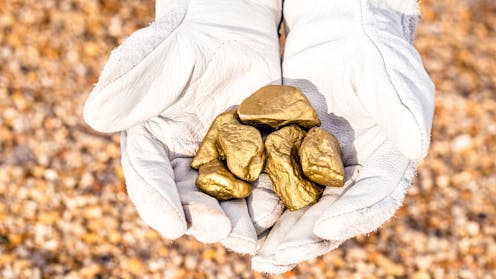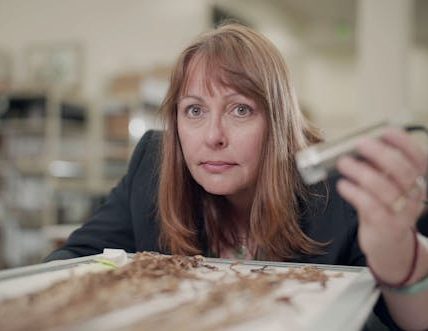A company says it could turn mercury into gold using nuclear fusion. Can we take this claim seriously?
The alchemist’s dream is to make gold from common metals, but can this be done?
The physics needed to explain how to change one element into another is well
understood and has been used for decades in accelerators and colliders, which smash sub-atomic particles together.
The most notable present-day example is the Large Hadron Collider at Cern, based in Geneva. But the costs of making gold this way are vast, and the quantities generated are minuscule.
For example, Cern’s Alice experiment estimated it produced only 29 picogrammes of gold while operating over four years. At that rate, it would take hundreds of times the lifetime of the universe to make a troy ounce of gold.
The Californian startup company Marathon Fusion has proposed a very different approach: to use the radioactivity from neutron particles in a nuclear fusion reactor to transform one form of mercury into another, called mercury-197.
This then decays into a stable form of gold: gold-197. This process of particle decay is where one subatomic particle spontaneously transforms into two or more lighter particles. The team from Marathon Fusion estimates that a fusion power plant could produce several tonnes of gold per gigawatt of thermal power in a single year of operation.
Bombarding the isotope mercury-198 with neutrons leads to the creation of the
radioactive isotope mercury-197 – which subsequently decays to the only stable
isotope of gold.
The key is to have energetic enough neutrons to trigger the mercury decay sequence. If this could be made to work, then it is an interesting idea. But whether it could make a tidy profit is another matter.
To do this, a large neutron flux (a measure of the intensity of neutron radiation) is required. This can be generated using a standard fuel mix for fusion reactors, deuterium and tritium (both of which are forms of hydrogen), to create energy in the plasma of a fusion reactor.
Neutrons penetrate material easily and scatter off the nuclei (cores) in atoms, slowing down as they do so. Neutrons with energies above 6 million electron volts are required to transform mercury-198 into gold.
To come up with its estimates, Marathon Fusion has been using a fusion reactor’s “digital twin” – a computer model that simulates the physics of the fusion reaction and the resulting radioactive processes. A limitation of this type of work is that the digital twin needs to be validated against a real commercial fusion reactor – but none currently exist.
There are many challenges to overcome before scientists can realise a commercial fusion reactor. These include the creation of new materials for its construction, and understanding the science required both to operate the system to continuously extract power, and to develop AI systems that can help keep the plasma fusion reaction running.
Even some of the most advanced fusion experiments, such as the UK-based JET (Joint European Torus) project, could only generate relatively small amounts of energy. However, researchers in the UK have devised a new way to shrink the size of fusion reactors by changing the way the exhaust plasma is controlled. A prototype of this novel fusion reactor concept, called Spherical Tokomak for Energy Production (Step), aims to be ready by 2040.
Radioactive waste
On paper, it is possible to make gold from mercury in a fusion reactor. However, until commercial fusion reactors are realised, the assumptions used by Marathon Fusion in its digital twin studies will remain untested.
Furthermore, any gold produced at a fusion reactor would initially be radioactive, meaning it would be classified as radioactive waste – and thus need to be managed for quite some time after production.
As nuclear and particle physicists know well, it is very easy to forget to include important physical effects and critical details when creating a digital twin of an experiment. But while the processing of that waste into usable forms of pure gold would be a further challenge to address, it will not necessarily deter long-term investors.
For now, this remains an attractive proposition on paper – but we’re still some way off from kickstarting a new kind of Californian gold rush.
Adrian Bevan does not work for, consult, own shares in or receive funding from any company or organisation that would benefit from this article, and has disclosed no relevant affiliations beyond their academic appointment.


